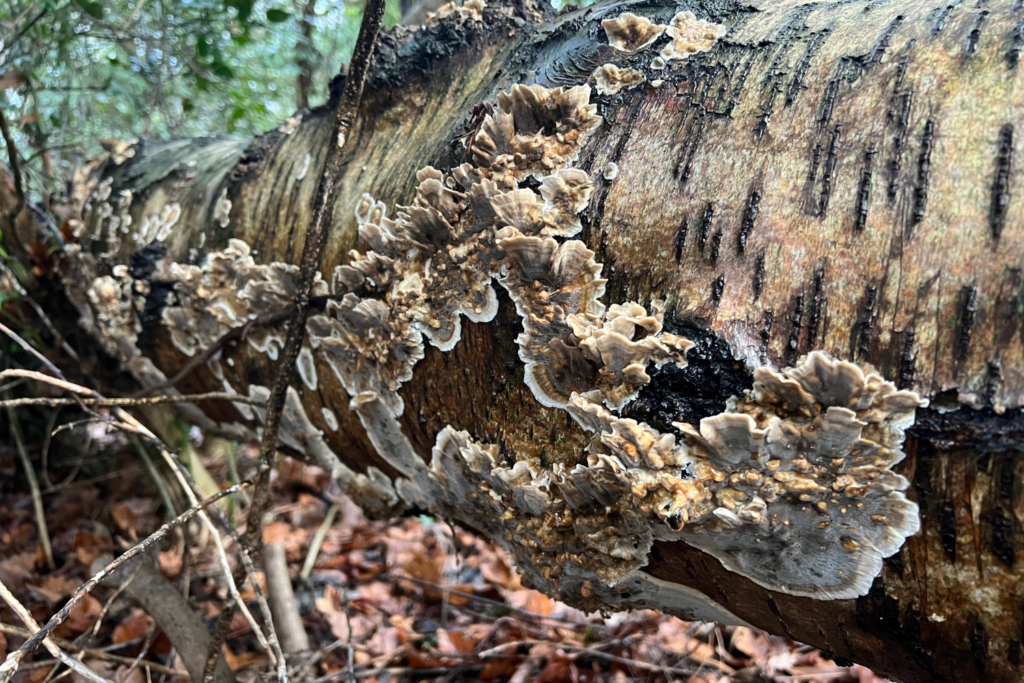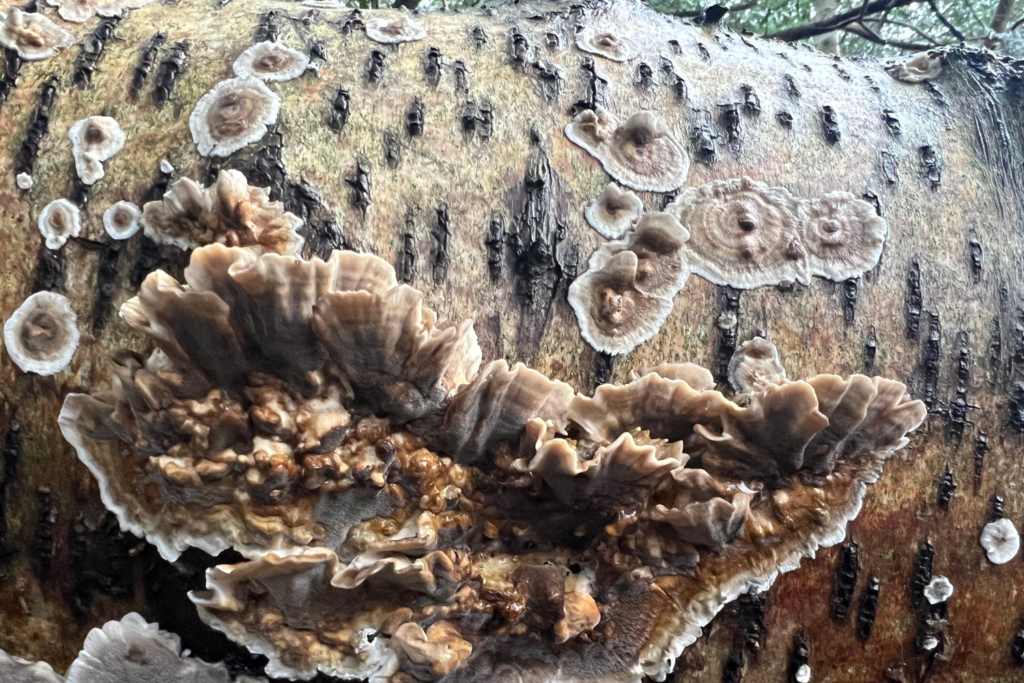Fungal infections are among the most serious biological threats to tree health in the UK. These diseases affect both native and ornamental tree species, with consequences ranging from leaf discolouration and dieback to severe internal decay and eventual death. Infected trees may also pose risks to public safety, property, and biodiversity.
Fungi attack all parts of a tree, including the roots, bark, leaves, and internal wood. While some fungi play a natural role in decomposition and soil health, others become pathogens under certain conditions—especially in trees that are stressed, injured, or already weakened by pests or environmental factors.

Where Fungal Infections Occur
- Leaves – Causing blotches, mildew, or premature drop
- Bark – Leading to cankers or oozing sap
- Roots – Causing decay and structural instability
- Wood – Resulting in internal rot and compromised strength
Common Fungal Diseases in UK Trees
Here are some well-known fungal diseases affecting trees in the UK, many of which are regularly discussed in the Vet Tree Forum:
Honey Fungus (Armillaria spp.)
One of the most damaging fungal pathogens. It attacks the roots, causes white rot, and produces honey-coloured mushrooms near the base. Trees often show reduced growth, yellowing leaves, and dieback.
Ash Dieback (Hymenoscyphus fraxineus)
This devastating disease affects ash trees across the UK. Symptoms include blackened leaves, crown dieback, and lesions on stems. Many infected trees die within a few years.
Phytophthora Root Rot
Caused by soil-borne pathogens like Phytophthora cinnamomi, this disease attacks tree roots, causing wilting, stunted growth, and eventual death.
Oak Wilt and Acute Oak Decline
These conditions affect oak species. Oak wilt restricts water movement, while Acute Oak Decline involves bacterial and fungal co-infection, often fatal within a few years.
Coral Spot (Nectria cinnabarina)
This fungus affects dead or dying wood, producing bright pink or red pustules. It can invade weakened branches and hasten decline.
Signs of Fungal Infections in Trees
Early Warning Signs
- Leaf spots, wilting, or discolouration
- Fungal fruiting bodies (mushrooms, brackets, or puffballs)
- Cankers or dead patches on bark
- Dieback of branches or stems
- Unusual growths or swellings
- White rot or soft, spongy wood
- Unexplained reduction in canopy density
Prevention and Control of Fungal Infections
Promote Tree Health
Healthy trees are less vulnerable to fungi. Keep them well-watered during dry spells, mulch around the base, and avoid damaging roots or bark.
Improve Airflow and Drainage
Fungi thrive in damp, stagnant environments. Ensure proper drainage and prune trees to allow light and airflow through the canopy.

Sterilise Tools
When pruning infected or potentially infected trees, your tools can easily carry fungal spores from one branch—or tree—to another. This is one of the most common and avoidable ways that fungal infections spread.
Remove Infected Material
Cut back and dispose of infected branches or leaves. Burn or bin them—never compost diseased materials.
Apply Fungicides (When Needed)
Chemical treatment is a last resort. Fungicides may help in early stages or high-value trees. Always seek advice from a professional arborist.
Monitor Regularly
Schedule routine inspections, especially for at-risk trees. Catching infections early can save the tree.
When to Call a Tree Specialist
If you notice mushroom growth, severe dieback, or visible decay near the base or trunk, it’s best to consult a qualified arborist. Advanced fungal infections can compromise tree safety, particularly near buildings, roads, or play areas.
Tree professionals use tools like
- Resistographs – To measure internal wood strength
- Sonic Tomography – For decay detection mapping
- Soil testing – To assess root health
Legal Considerations and Protected Trees
Before felling or treating a tree, especially in conservation areas or with Tree Preservation Orders (TPOs), check with your local authority. Permission is often required for any work on protected trees.
Conclusion: Protecting Trees from Fungal Infections
Fungal infections in trees are common but manageable with the right approach. Early identification, proper tree care, and timely intervention are key to preserving tree health and preventing disease spread.
By staying informed and proactive, you can ensure the longevity, safety, and ecological value of trees in your landscape. If in any doubt, consult with the Forestry Commission, or a certified tree consultant for advice or treatment options.






